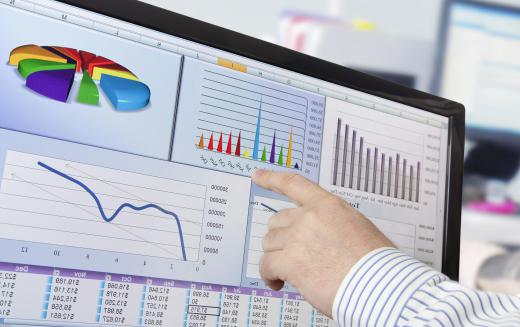What is a General Ledger?
Also commonly referred to as an accounting ledger, a general ledger is a primary accounting record used by a business to keep track of all the financial transactions the company makes. All financial transactions, debits and credits, are recorded, or "posted," in the general ledger, regardless of whether or not they also post to a subsidiary ledger (sub-ledger), such as accounts receivable or cash. These values can provide the information used to generate all of a company's financial statements. When the idea of ledgers was first created, physical ledgers were manually kept, usually in books; with the advancement of technology, most general ledgers are now computerized using accounting software. Such software programs can be purchased over the Internet or from most stores that sell computer software products.
Double-entry Bookkeeping

At least five types of accounts make up the general ledger: assets, liabilities, owner's equity, revenue, and expense; often, gains and losses are also included. In double-entry bookkeeping, when a transaction occurs, it always affects two of these accounts in equal and opposite ways; it is a debit to one and a credit to another. The total amount of debits should always equal the total amount of credits, so if the two do not match up, it indicates that an error has been made. This comprehensive and balanced format is one reason why the account ledger is used to create financial statements.
General and Sub-ledgers

As the main accounting record, the general ledger is created first. It is organized by account, with each numbered in a series, and each number is typically five to six digits long. Accounts are delegated a number based on the purpose of the account; this numbering sequence allows information to be found quickly and easily, and is a common business practice. The list of all the accounts in the general ledger is called a chart of accounts, and typically includes between 20 and 30 entries per chart.
Sub-ledgers are created to simplify the primary ledger and keep track of a specific type of transaction, providing more detail about those transactions. Common types of sub-ledgers include accounts receivable, accounts payable, cash, and sales. The multiple daily transactions are recorded within these sub-ledgers, and the final, summary value is posted into the general ledger.
Computer Software
Originally, the accounting ledger was a physical book used to manually record a company's transactions; today, most companies use computer software to maintain their accounting ledgers. The concept behind double-entry bookkeeping is that there is always a positive and negative value to every transaction; the strict rules and dependencies built into the double-entry accounting process meant that it was one of the first business processes to become computerized. As a result, the availability and usage of accounting ledger software products increased.
Computerized accounting systems allow companies to create very large lists of ledger accounts while still keeping them organized and easy to access. In many cases, systems are set up to automatically feed the correct data into the appropriate financial statement reports. Reports can be run to provide regular updates on the company's financial position.
Setting up the general ledger chart of accounts is usually the first task to be completed when installing any computerized accounting software package. A standard chart of accounts is typically included in these software packages, with multiple options for a wide range of industries. Not all companies will need to use all available accounts, however, and should choose only those appropriate for their needs.
General Journal
The general ledger should not be confused with the general journal, which provides a more formal, chronological list of a company's financial transactions. These transactions are recorded in the general journal first, and typically include more information than is included in the accounting ledger; the balance of each account is not included. As in the accounting ledger, however, the credits and debits listed in the general journal must total zero.
AS FEATURED ON:
AS FEATURED ON:












Discussion Comments
Don't forget the date of the transaction. It's very important to know when the transaction was done.
An accounts payable ledger is used to keep track of accounts payable entries. The ledger includes the name and details of the vendor, purchase order numbers, quotations, and invoices processed and paid.
How many books are prepared for the accounting of accounts payable?
How do we do accounting of accounts payable?
Post your comments